In this article, we explore what a CDP is and how brands leverage this power to deliver exceptional customer experiences
November 6, 2023
What is a CDP: Harnessing the Potential of a Data Platform
Think about your most recent online fashion purchase. From searching for the latest trends to comparing prices and styles across various websites, your journey likely involved multiple interactions with the brand you eventually chose. What you may have also noticed is how each new interaction felt increasingly more tailored to your preferences — from personalized ads on social media to a more customized website browsing experience, or even automated emails with custom recommendations.
So how do brands manage this level of customization?
Most often, the answer lies in harnessing the power of a Customer Data Platform (CDP). In this article, we’ll explore what a CDP is and how brands leverage this power to deliver exceptional customer experiences using real-life examples from Maestra’s clients such as L’Oréal Luxe, United Colors of Benetton, 12STOREEZ and more.
What Is a CDP?
A simple definition of a CDP (Customer Data Platform) is a database that stores customers' personal data and their interaction history with the brand, such as purchases, store visits, website visits, email reads, and more.
A CDP integrates with all of the company’s systems, including Customer Relationship Management (CRM) software, Content Management Systems (CMS), Enterprise Resource Planning (ERP) software, mobile applications, call centers, and cash registers. The platform consolidates customer profiles from all these systems into a single profile. The data that is collected enables marketers to create customer segments, launch advertising campaigns, and personalized promotions.
In simpler terms, a CDP helps businesses organize, clean, and understand their customer data, meaning they can send the right marketing messages to the right people at the right time. Once implemented, CDPs provide marketers with comprehensive access to a variety of tools for segment creation, campaign execution, performance measurement, and more, helping to minimize IT involvement. This results in more autonomy and control over tasks for marketers.
Why Do You Need a CDP?
Let’s consider a company navigating through the complexities of a dynamic marketing environment. This company has a multitude of customers and a wide array of marketing tools at their disposal, including a loyalty program, CRM system, services for sending trigger-based and bulk emails, personalized email recommendations, website pop-ups, SMS, mobile apps, and web push notifications. All of these tools often operate in silos.
As a result, the company lacks a unified customer data platform, which by definition, would centralize customer information and resolve the current fragmented state of their database. This disjointed approach results in non-personalized interactions with customers — for instance, the company sends bulk emails without segmenting the audience or considering individual customer preferences and interests.
CDPs address these issues by centralizing customer data and creating a unified customer profile — this, in turn, facilitates more personalized, targeted, and effective marketing efforts.
How Does a CDP Work?
A Customer Data Platform serves as a hub connecting various platforms, data sources, and communication channels. This connectivity is established via connectors, Software Development Kits (SDKs), webhooks, and Application Programming Interfaces (APIs). All of these facilitate the transfer of various data types to the CDP, including:
- Customer contact details
- Customer activity (e.g., interactions with campaigns, browsing behavior, and website/mobile app history)
- Customer purchase history
- Product data
- Offline activity in stores and points of sale
- Call center interaction history
All this data is used to create a comprehensive customer profile for each individual in the company’s database. These profiles are constantly updated in real-time to provide marketers with the most accurate and complete data for their campaigns.
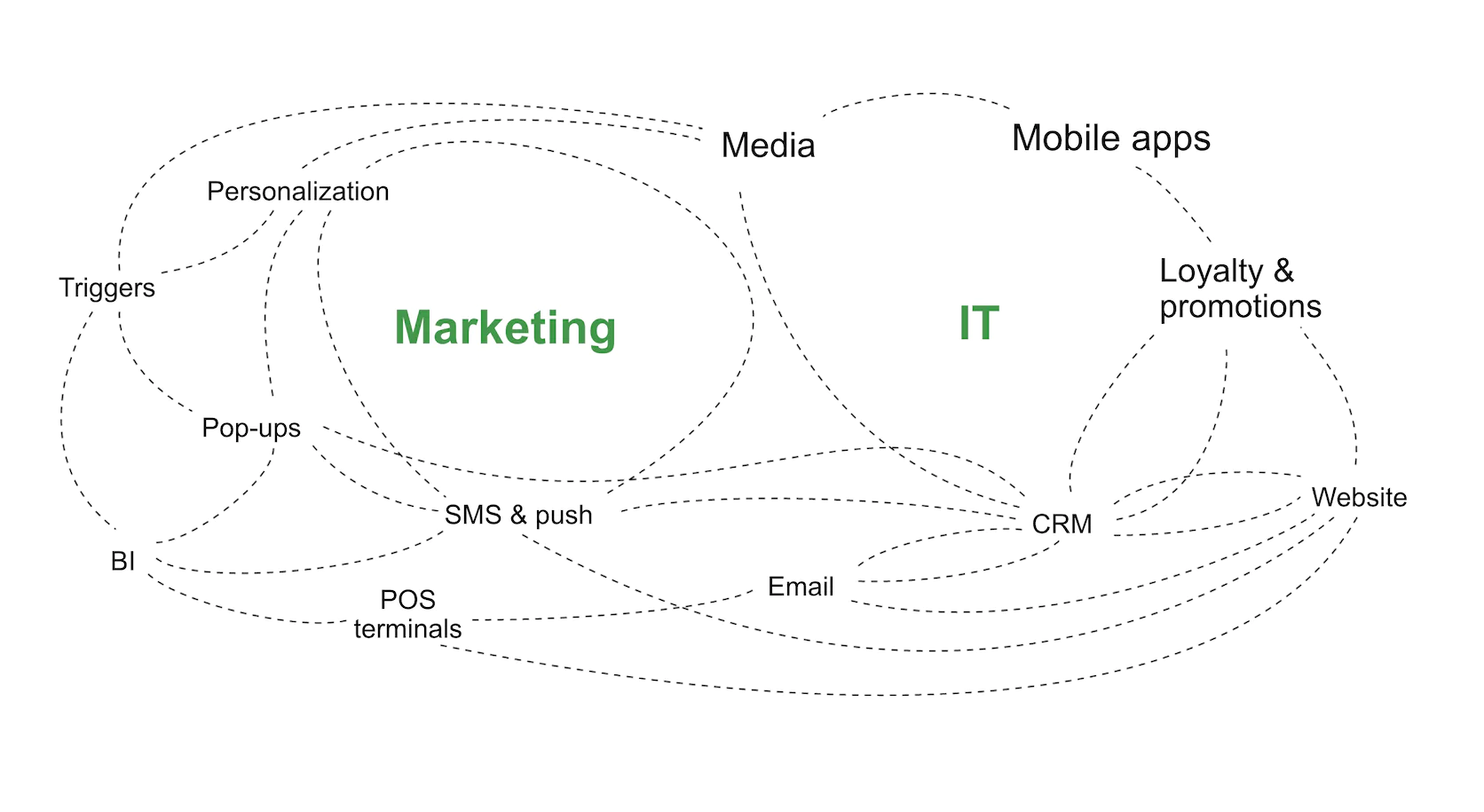
An illustrative example of what data looks like for companies without a CDP: Customer info is dispersed across different systems which are not interconnected
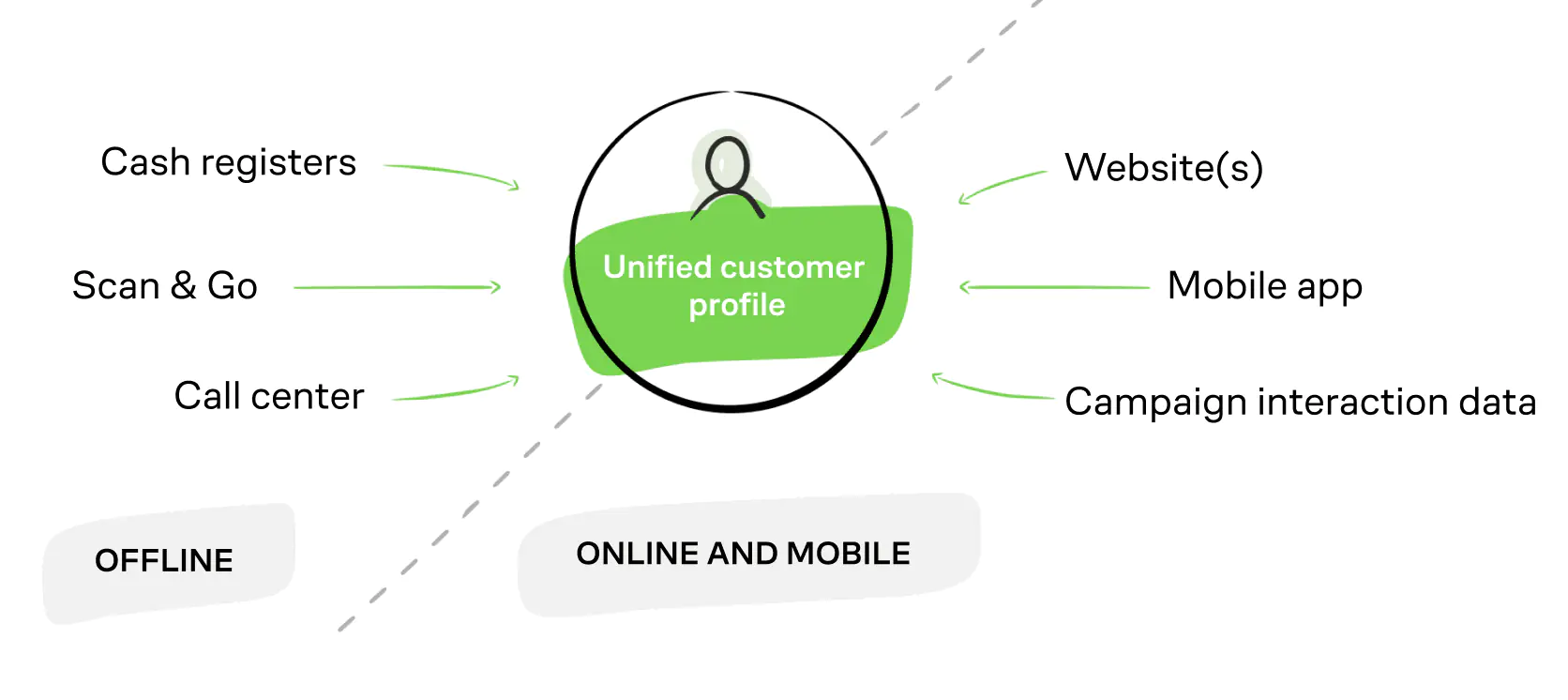
This example, from one of Maestra’s clients, illustrates what a company using CDP technology may look like
Benefits of a CDP for Marketers
Customer Segmentation
A CDP allows you to segment customers based on multiple different characteristics, from basic attributes such as age and location, to more complex features such as where in the customer lifecycle they sit, meaning more precise marketing communications with customers. For instance, instead of sending a discount to your entire customer base, you can send a discount offer only to customers who require extra motivation for making a purchase.
Example. Maestra’s client, L’Oréal Luxe demonstrates a great example of customer segmentation. Thanks to a unified profile, the brand segments customers based on:
- Standard RFM (Recency, Frequency, Monetary Value) analysis criteria, such as the date of the last order, the number of orders a customer has made over time, and the total value of all orders.
- Customer interests.
- Preferred communication channels.
Through segmentation, L’Oréal Luxe sends communications to customers who find them relevant, which helped the brand double its revenue from CRM communications.
Campaign Automation and Personalization
Automation and personalization capabilities enable the activation of automated campaigns across various channels such as email, SMS, push notifications, chatbots, and more. This includes campaigns like abandoned searches, product views, items added to favorites or the cart, birthday greetings, and reactivation efforts. Personalizing these campaigns becomes feasible because the company has access to the customer’s entire purchase history within the CDP.
Example. Flower delivery service, Blossom Flower, received an ROI of 426% after implementing a CDP. The team launched 38 automated campaigns within the first 41 days post-implementation. These campaigns cover the entire customer lifecycle — from welcome emails to reactivation campaigns for churned customers.
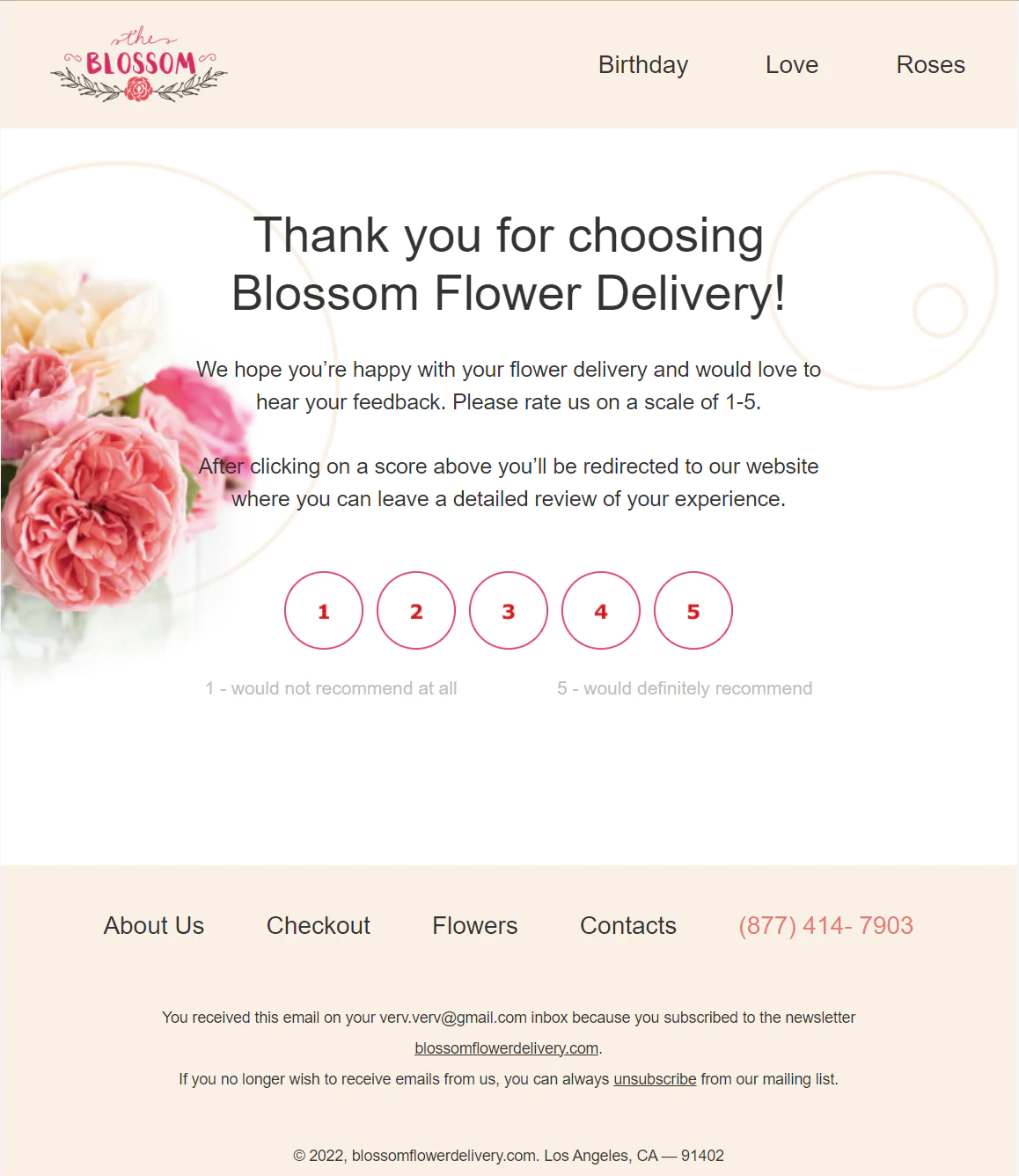
One of Blossom’s automated campaigns, sent to customers following the successful delivery of their flower order
Personalized Website Browsing Experience for Customers
Website personalization opens the door to various enhancements, including pop-up notifications, displaying popular and related products on item pages, and featuring a section with personalized recommendations.
Example. United Colors of Benetton implemented product page personalization by adding an “X people have purchased this item” block. Visitors who view this block convert into orders 10% more frequently than those who don’t.
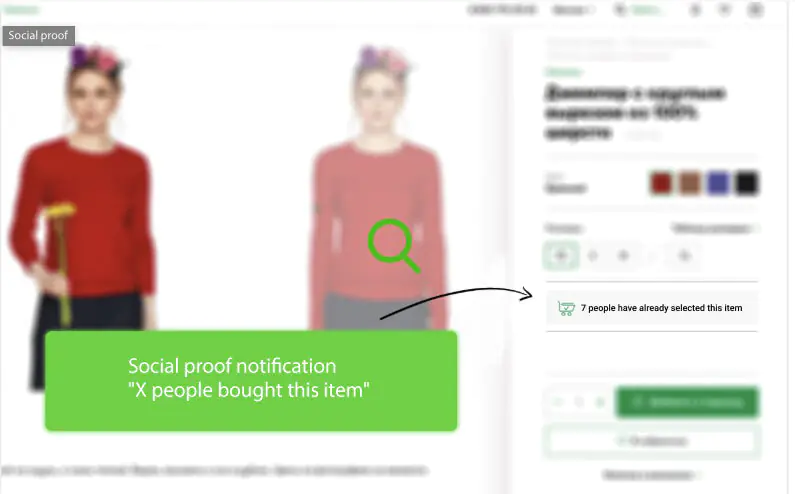
A sample of what this looks like on the brand’s website
Personalized Discounts
Customer data platforms allow marketers to tailor discounts according to each customer’s historical actions and preferences.
Example. Big box retail chain, METRO, uses data collected by their CDP to send RFM-based email campaigns.
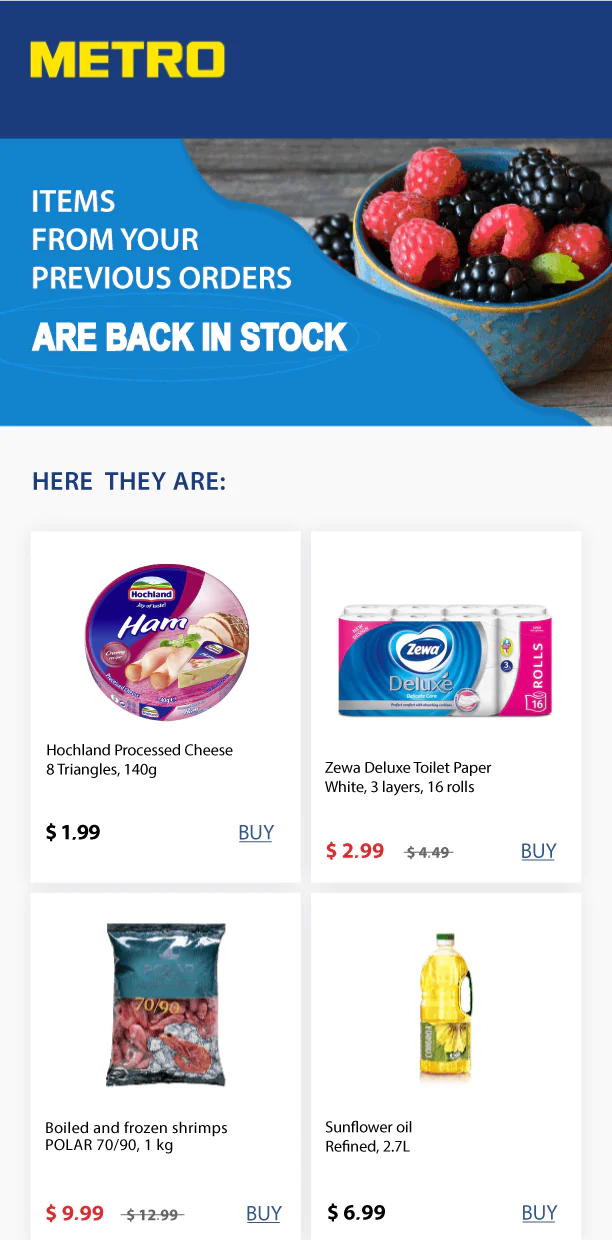
Example of an RFM campaign containing recently purchased items — this email is sent out once a month
Mobile App and Push Notification Personalization
Personalizing push notifications and in-app messages allows you to customize them for each customer segment — for instance, displaying or hiding specific notification blocks.
Example. Octazone customizes mobile push notifications based on user segmentation. Subscribers who have committed to a purchase receive different communications compared to users who have only installed the app. Moreover, those with active subscriptions receive personalized notifications based on their training progress (such as monthly reports).
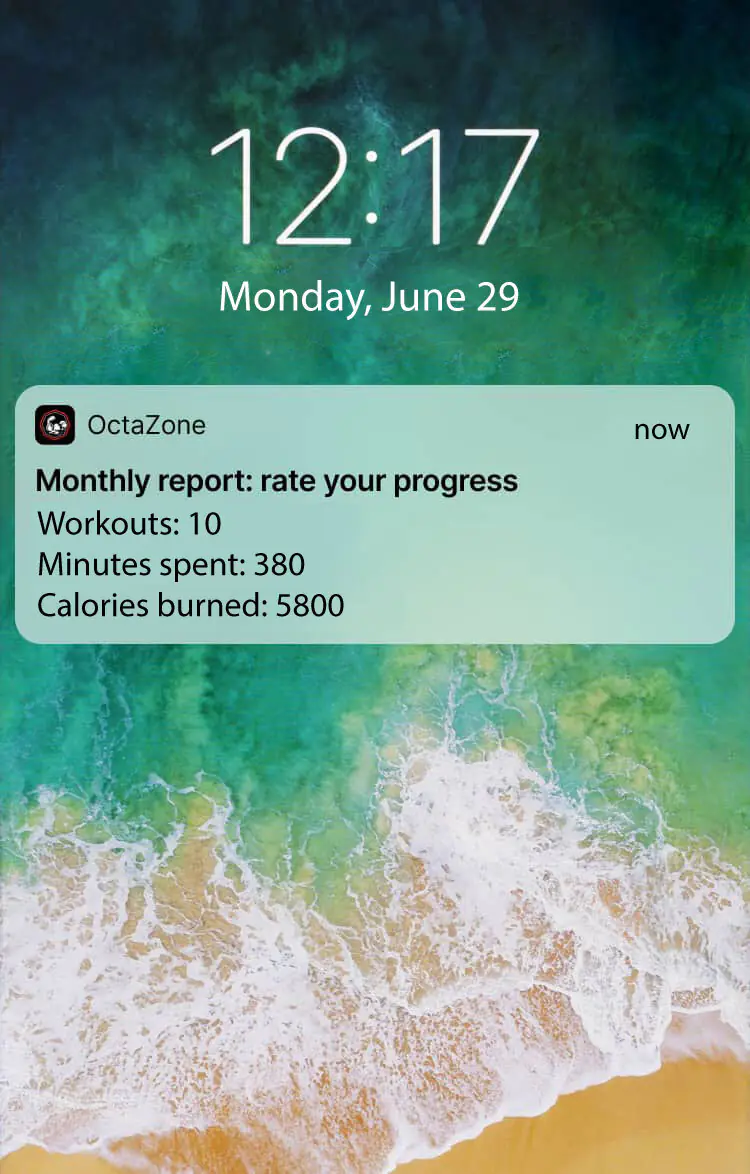
A monthly report for active subscribers
Increased Precision in Targeted Ads
Tailoring digital ads to different customer segments enables marketers to provide distinct offers for each group. For example, targeting new customers with promotions that focus on affordability — e.g., inexpensive products and fast delivery, while offering loyal customers access to exclusive members-only sales. This is made possible by exporting customer segments from the CDP to advertising platforms.
Example. PuffCuff used data from their CDP in Maestra to create lookalike audiences for targeted Facebook ads. The segment included customers who had recently visited PuffCuff’s website, made orders, and engaged with email campaigns over the previous month. This approach resulted in a 137.5% increase in outbound CTR and a 63.96% decrease in CPM.
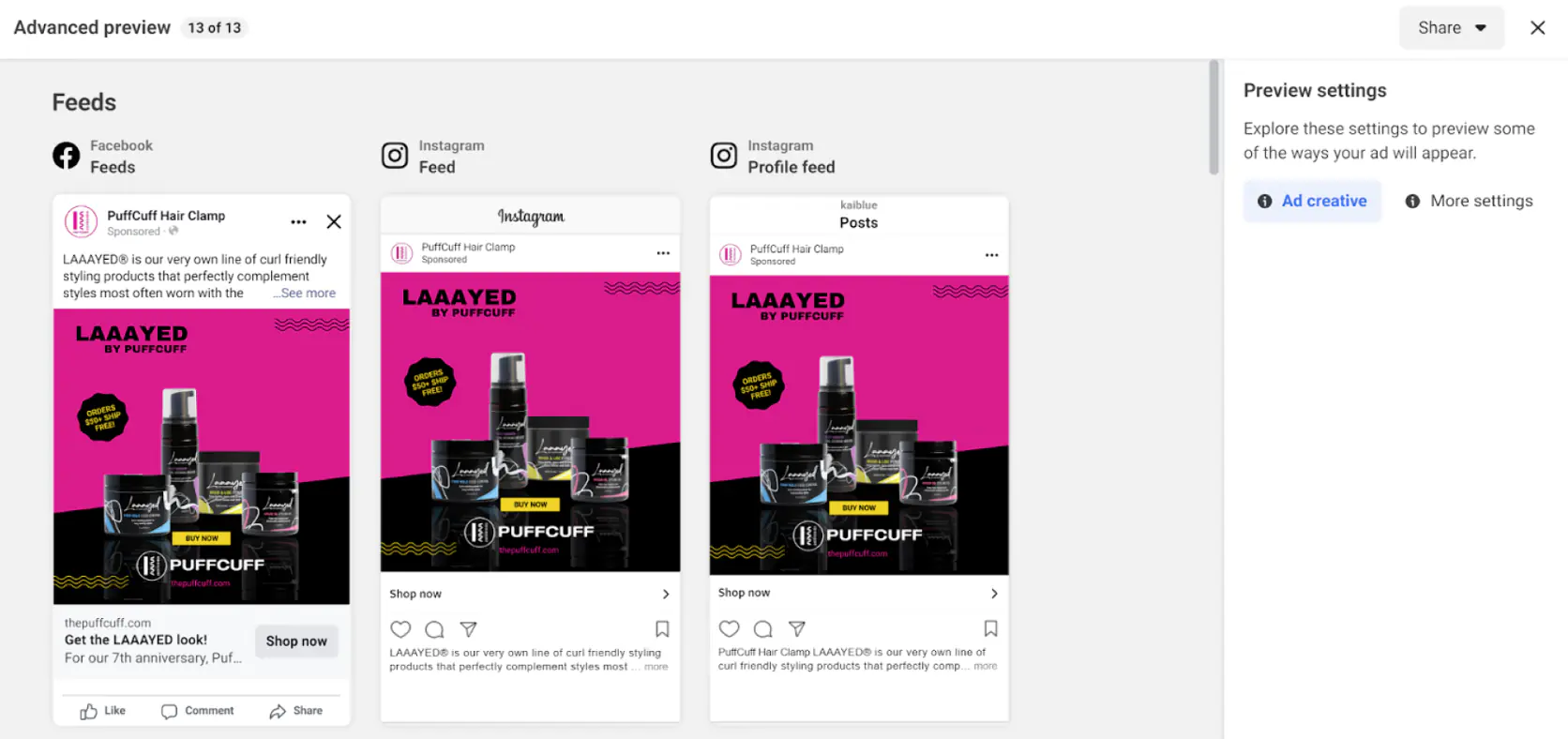
Example of ads for a LaL audience based on those who purchased products from the PuffCuff’s LAAAYED range
Hypothesis Testing
Testing hypotheses aids in launching effective marketing campaigns in emails, pop-ups, or product recommendations, and enhancing them.
Example. Fashion retailer, 12 STOREEZ, uses A/B tests to determine customer preferences when it comes to communications. In one of their tests, the team determined that customers prefer shorter emails containing one look, as opposed to a longer one with 5 outfits. The shorter email received almost twice as many clicks, allowing the company to modify future email campaigns to better engage customers.
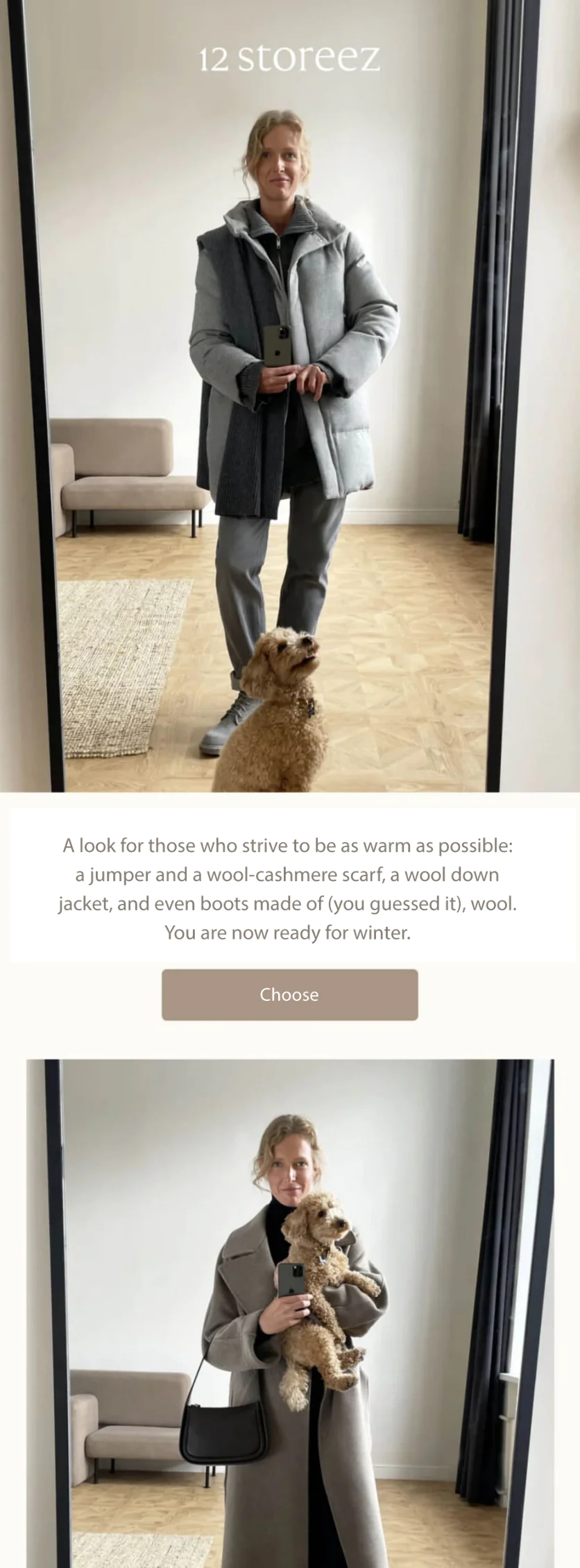
Variant 1: The email includes 5 outfits. The customer simply needs to click the “Choose” button under the photo and the text will expand with a description of the outfit

Variant 2: A campaign that contains just one outfit
What Makes a CDP Different from a CRM and DMP
Although Customer Data Platforms (CDPs), Customer Relationship Management (CRM) systems, and Data Management Platforms (DMPs) may seem similar at first glance, in practice, these technologies have important distinctions which affect marketing outcomes for businesses. These should be taken into consideration when selecting the right solution.
Customer Data Platforms collect and unifies data from various sources, creating comprehensive customer profiles that can be accessed and utilized in real-time across different platforms. A CDP focuses on collecting first-party data and provides a more detailed and actionable view of customers. On the other hand, a Customer Relationship Management (CRM) system primarily manages customer interactions and sales processes, relying mainly on manually entered or direct interaction data. It helps in tracking customer communications, sales activities, and forecasting. A Data Management Platform (DMP), meanwhile, primarily deals with third-party data from external sources, aggregating and segmenting data for targeted advertising and audience building. It typically has a shorter data retention period and focuses more on anonymous customer data for broad advertising purposes.
Assessing the Need for a Customer Data Platform: Who Benefits and Who Doesn’t?
Customer Data Platforms are particularly advantageous for businesses managing extensive customer databases, necessitating advanced segmentation, and overseeing numerous communication scenarios that require both automation and personalization.
On the other hand, companies operating with a smaller customer base, employing straightforward segmentation techniques, and handling fewer than ten customer communication scenarios might find that a CDP does not translate to considerable benefits. When considering technological investments, it’s crucial that these are tailored to the unique needs and size of the organization.
How to Implement a CDP
1. Identify Key Objectives
Begin by defining what you want to achieve by implementing the CDP — create a specific list of outcomes and desired metrics.
Begin by defining what you want to achieve by implementing the CDP — create a specific list of outcomes and desired metrics.
2. Select the Best CDP for Your Company’s Needs
To avoid feeling overwhelmed when selecting the right CDP, use the list from the first step to determine your “must-have” features — for instance, omnichannel communication capabilities, built-in analytics, A/B testing functionality, or even machine learning-driven tools.
To avoid feeling overwhelmed when selecting the right CDP, use the list from the first step to determine your “must-have” features — for instance, omnichannel communication capabilities, built-in analytics, A/B testing functionality, or even machine learning-driven tools.
3. Assess Your Readiness
Consider the essential teams that will play a role in the integration process to get an understanding of the implementation’s timeline, potential challenges, as well as any additional resources required. Given that implementations are often technically complex, additional IT support might be necessary if your current IT team lacks the requisite capabilities.
Consider the essential teams that will play a role in the integration process to get an understanding of the implementation’s timeline, potential challenges, as well as any additional resources required. Given that implementations are often technically complex, additional IT support might be necessary if your current IT team lacks the requisite capabilities.
4. Connect Data Sources
This is the stage where the bulk of the integration occurs. Here, your IT team will integrate all your data sources, such as your website, CRM, mobile app, and online store with your chosen CDP. This process can take anywhere from a couple of days to a few months. In this stage, the CDP will deduplicate and consolidate data to create unified customer profiles.
This is the stage where the bulk of the integration occurs. Here, your IT team will integrate all your data sources, such as your website, CRM, mobile app, and online store with your chosen CDP. This process can take anywhere from a couple of days to a few months. In this stage, the CDP will deduplicate and consolidate data to create unified customer profiles.
5. Onboard Your Marketing Team
This step can be carried out alongside the previous ones, ensuring a seamless transition to the new system. Navigating any new software can be daunting, but this is particularly true with something as intricate as CDP technology. While team members might quickly adapt to familiar tools, it could take longer to fully comprehend and utilize the features that are new to them to fully leverage their potential.
This step can be carried out alongside the previous ones, ensuring a seamless transition to the new system. Navigating any new software can be daunting, but this is particularly true with something as intricate as CDP technology. While team members might quickly adapt to familiar tools, it could take longer to fully comprehend and utilize the features that are new to them to fully leverage their potential.
6. Troubleshooting, Adapting, and Scaling Up
In this phase, it’s crucial to be proactive in identifying and resolving any issues with the CDP, ensuring it is fully optimized for your team’s needs. As your organization develops and your marketing requirements become more complex, be prepared to escalate your use of the CDP, maximizing its extensive functionalities to meet the evolving demands of your business.
In this phase, it’s crucial to be proactive in identifying and resolving any issues with the CDP, ensuring it is fully optimized for your team’s needs. As your organization develops and your marketing requirements become more complex, be prepared to escalate your use of the CDP, maximizing its extensive functionalities to meet the evolving demands of your business.
Real-life CDP Use Cases
To truly get to grips with what Customer Data Platforms can offer, it can help to observe their application in real-life situations. Here are a few case studies that illustrate the successful utilization of CDPs across different organizations:
E-book retailer, D-Steimatzky
The Israeli e-book retailer implemented Maestra’s CDP to increase revenue from direct communications. The platform enabled them to launch over a dozen automated campaigns for distinct audience segments within the first few months post-implementation. As a result, direct communications now contribute to 29.4% of their revenue.
The Israeli e-book retailer implemented Maestra’s CDP to increase revenue from direct communications. The platform enabled them to launch over a dozen automated campaigns for distinct audience segments within the first few months post-implementation. As a result, direct communications now contribute to 29.4% of their revenue.
Hair care and accessory brand, PuffCuff
After centralizing data and communications in Maestra’s CDP PuffCuff was able to reduce marketing stack costs by 73.6%, with an additional 43.76% decrease in cost per order thanks to optimized Facebook ad targeting with CDP data.
After centralizing data and communications in Maestra’s CDP PuffCuff was able to reduce marketing stack costs by 73.6%, with an additional 43.76% decrease in cost per order thanks to optimized Facebook ad targeting with CDP data.
Jewelry brand, German Kabirski
Our client, German Kabirski, launched 31 marketing flows within its first four months after implementing Maestra’s CDP, which resulted in a 2349% ROI.
Our client, German Kabirski, launched 31 marketing flows within its first four months after implementing Maestra’s CDP, which resulted in a 2349% ROI.
In Summary
The adoption of Customer Data Platforms (CDPs) marks a significant shift toward personalized and customer-centric marketing. By centralizing fragmented customer data and seamlessly integrating with various systems, CDPs empower marketers to build detailed customer profiles, resulting in more targeted and meaningful interactions. This capability proves especially crucial for businesses managing large customer databases and numerous communication scenarios, providing the tools necessary for advanced segmentation and personalized communication. However, the decision to implement a CDP should be carefully considered, taking into account the size and specific needs of the organization.
Ultimately, CDPs represent a vital step forward in modern marketing, enabling businesses to enhance customer experiences while achieving greater efficiency and autonomy in their marketing efforts.
